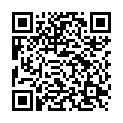|
|
|
| Module code: WIBb21-430 |
|
|
15VS+15US (30 hours) |
|
5 |
| Semester: 4 |
| Mandatory course: yes |
Language of instruction:
German |
Assessment:
Project work
[updated 11.06.2025]
|
|
The total student study time for this course is 150 hours.
|
Recommended prerequisites (modules):
WIBb21-230
[updated 19.11.2025]
|
Recommended as prerequisite for:
WIBb21-630
WIBb21-730 Systems Engineering/ X in the Loop (HiL, SiL, MiL)
[updated 12.11.2025]
|
Module coordinator:
Studienleitung |
Lecturer:
Lehrbeauftragte der htw saar
Lehrbeauftragte
Professor/innen des Studiengangs
[updated 19.11.2025]
|
Learning outcomes:
After successfully completing this course, students will be able to:
- use the Arduino IDE (Integrated Development Environment) to program a microcontroller (Arduino).
- illustrate the differences between an implementation for microcontroller-based systems and an offline implementation.
- design a flowchart for the microcontroller-based system.
- implement code for the Arduino based on a given flowchart.
- integrate selected sensors and actuators using the microcontroller.
[updated 11.06.2025]
|
Module content:
Students will learn the basics of Arduino boards and related components (e.g., plug-in boards).
Students will receive an introduction to programming a microcontroller (e.g., Arduino Uno) and integrating sensors and actuators for interaction with the physical environment.
We will discuss the differences between implementation for microcontroller-based systems and offline implementation.
The module also covers the design of a flowchart for the microcontroller-based system and the implementation of code for Arduino based on a given flowchart.
[updated 11.06.2025]
|
Teaching methods/Media:
Lectures, digitally supported teaching, workshop project, self-study
[updated 11.06.2025]
|
Recommended or required reading:
Literature references will be provided during the lecture.
[updated 11.06.2025]
|

